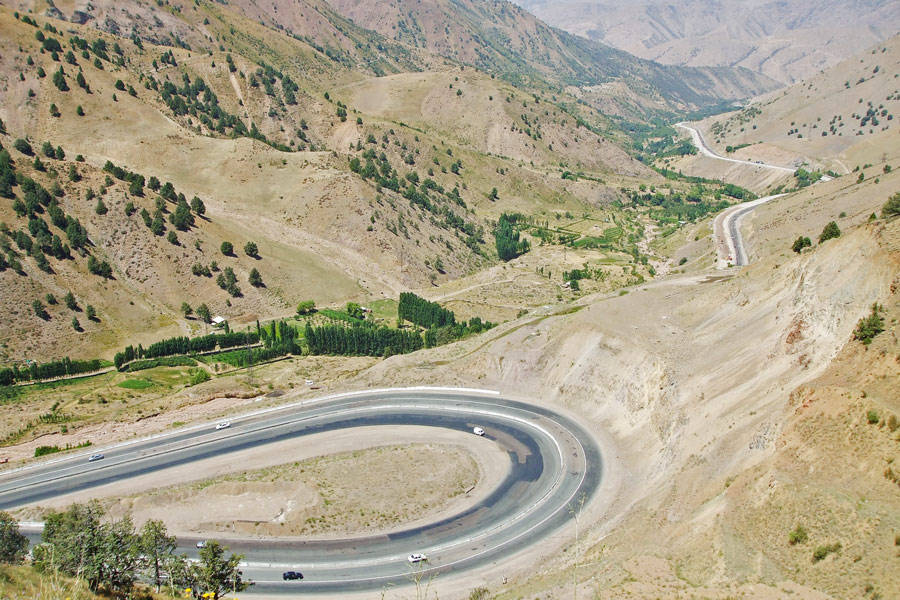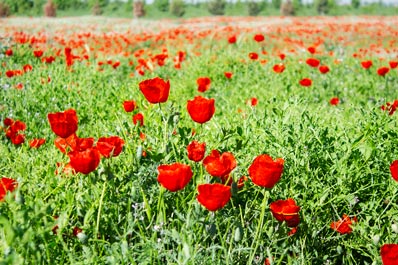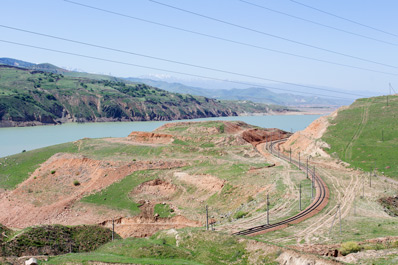About the Ferghana Valley

The picturesque Ferghana Valley is located in the eastern part of Uzbekistan. It is the most densely populated region of Uzbekistan, with almost a third of the country's population. The diamond-shaped valley is 300 km from east to west and 170 km from north to south.
The mild climate of the Ferghana Valley allows a growing season of 240 days per year. The primary emphasis on the production of cotton, silk and other agricultural crops has turned a large part of the valley into an oasis.
With nearly 25,000 sq. km of fertile land, it is a great oasis surrounded by the Kuramin mountain range in the North-West, Chatkal mountain range in the North, Ferghana mountain range in the East, and the Alai and Turkestan ranges in the South. There is scarcely a hectare of uncultivated land, the primary crop being cotton. In ancient times, the exceptional flora of the region gave the Ferghana Valley the name "Golden Valley".
The Ferghana Valley is divided into five regions: Ferghana, Andijan, Namangan, Khojand (located in Tajikistan) and Osh (located in Kyrgyzstan).
The Ferghana Valley is rich in a number of natural resources, including gold, oil, copper and other raw materials. The Sirdarya, one of the great rivers of Central Asia, runs across the valley. It is fed by more than 70 mountain streams. However, most of these streams are diverted for irrigation purposes and do not reach the Sirdarya.
A nature exhibit is devoted to the wildlife of the area. Birds, including seagulls, pheasants and crows, are plentiful on the shores of the Sirdarya. The mountains are home to birds of prey, as well as bears, foxes, wolves, jackals, porcupines, badgers and red groundhogs. Several animals in Uzbekistan are included in the "Red Book", a world-wide list of animals in danger of extinction, which was completed in 1980. It is illegal to hunt these animals.
The first ancient settlements in the Ferghana Valley appeared 5-6 thousand years ago. It has been assumed that the Ferghana of the 6thc.-4thc. BC was in cultural contact with Southern and South-Western civilizations.
The valley's richness includes its millennia-old history and the traditions of its master craftsmen in silk, ceramics, woodcarving and a bounty of other ancient arts of humanity.
- In the 2ndc. BC the Great Silk Road connecting China and Mediterranean countries ran through Fergana.
- In the 2ndc. BC it was called Ershi and was the ancient capital of Davan; there was the embassy of the Chinese emperor Udi, who signed an agreement on the opening the Great Silk Road, was located here.
- In the 2ndc. BC discord with China caused a war between China and Davan.
- In the 2nd - 4thc. a part of Vergana Valley was in Kushan Kingdom.
- In the 7thc.- 8thc. Fergana Valley was conquered by Arabs.
- In 715 Kuteiba-lbn-Muslim, the conquerer of ancient Sogd and Khorezm towns, governor of Khorasan and Khorezm was killed near the town Kasan.
- In the 8thc.- 9thc. the Samanids came to rule over the Fergana Valley.
- In the 9thc. - 11thc. the town of Akhsikent became the capital of Fergana where production of high-quality steel had been developed by that time.
- In the beginning of the 12thc. the valley was devastated during the Mongolian invasion.
- In the 14thc. the Temurids came to power over the Valley; Fergana became the favorite vacation spot of Tamerlane.
- In the 16thc. the town Andijan became the capital of Fergana Valley during the reign of Babur.
- In the 16thc. Sheibani-khan annexed the Valley to the Uzbek state.
- In 1700 the Sheibanids were dethroned; Kokand became the capital of the new state.
- In the 18thc. Fergana Valley formed the new independent Kokand Khanate.
- In 1875 Kokand Khanate as Fergana Region, was annexed by tsarist Russia.
- Following the revolution of 1917, following the ethnic demarcation of 1924 the territory of Fergana Valley was divided among Uzbek, Tadjik, and Kirghiz Soviet Republics; the three regions of Fergana, Andijan, and Namangan were given to Uzbekistan





